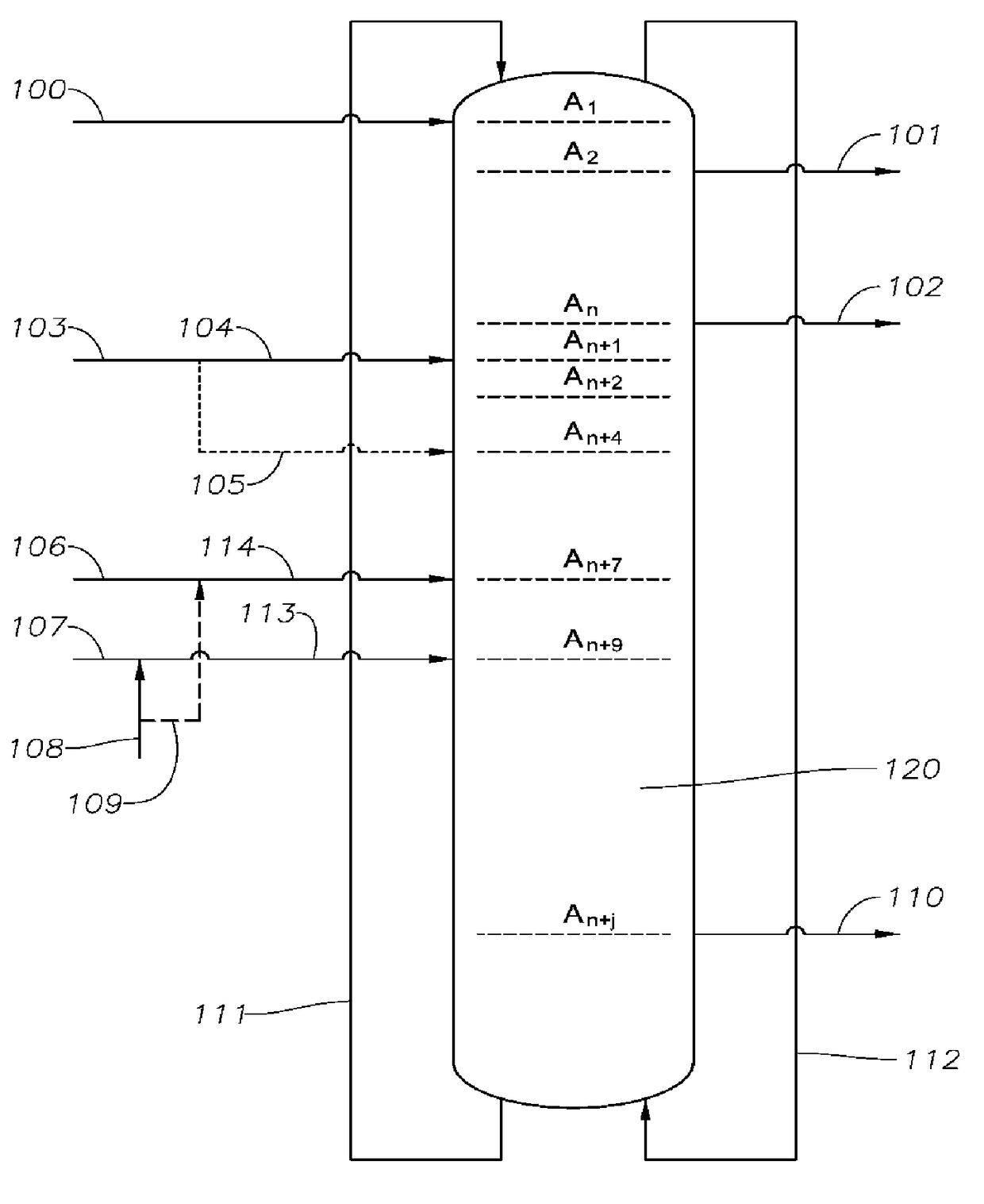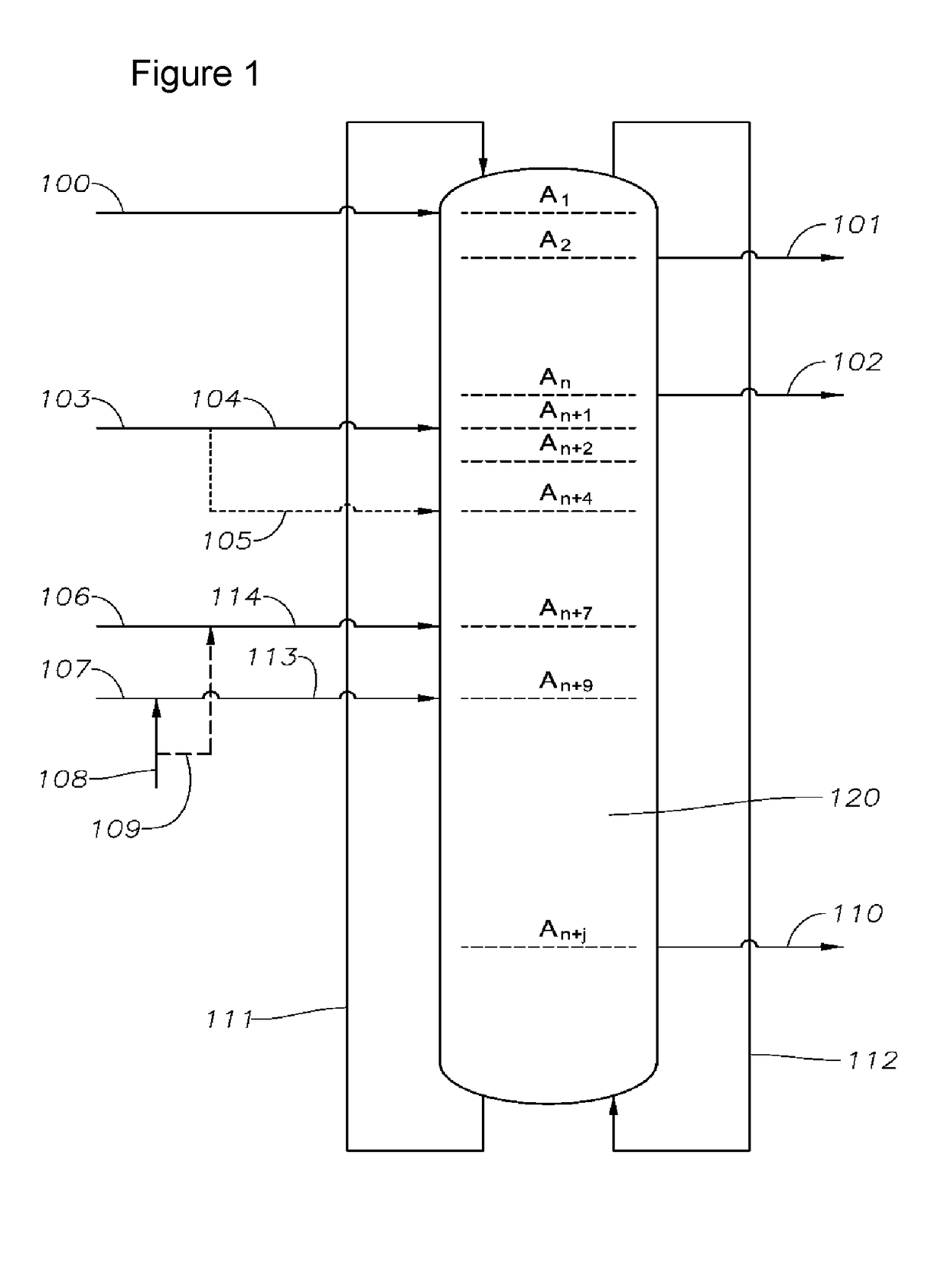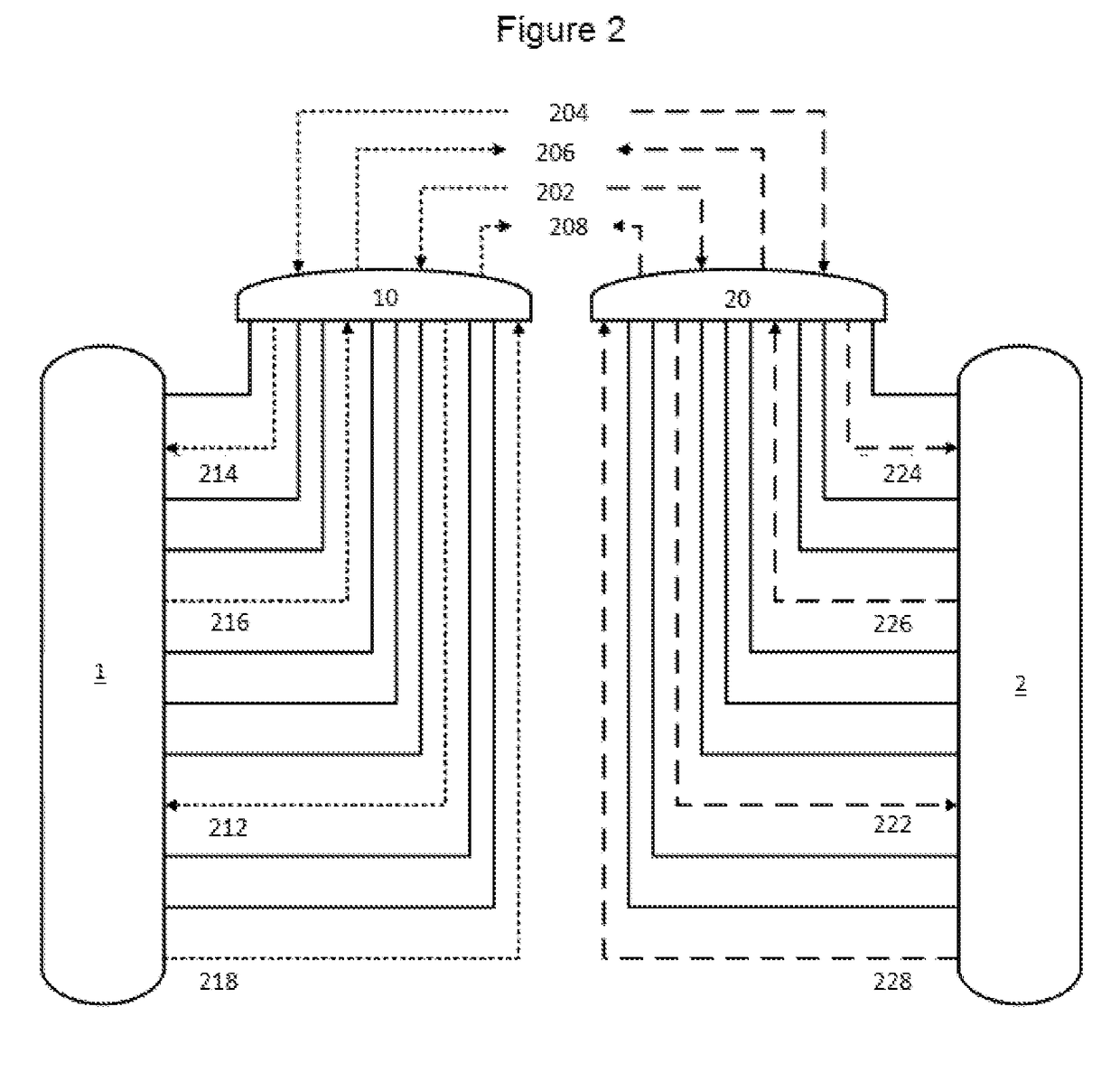Xylene Separation Process
a technology of paraxylene and separation process, which is applied in the field of paraxylene separation process, can solve the problems of increasing cost and energy consumption, accelerating wear and tear of peripheral equipment, etc., and achieves the effect of increasing the separation rate, and reducing the size and complexity of peripheral equipmen
- Summary
- Abstract
- Description
- Claims
- Application Information
AI Technical Summary
Benefits of technology
Problems solved by technology
Method used
Image
Examples
example 2 (
Inventive)
[0093]In this inventive example, the objective function is to maximize FFeed, the feed flow rate. The flow rates and results for the simulation of Example 2 are shown in Table 3.
TABLE 30 - X / 2X / 2 - XOperatingCham-Cham-To-Cham-Cham-To-conditionsber Aber Btalber Aber BtalFeed sub-stream06.116.116.1106.11flow rate (m3 / min)Desorbent sub-4.882.457.332.454.887.33stream flow rate(m3 / min)Extract sub-stream05.85.85.805.8flow rate (m3 / min)Raffinate sub-stream4.882.777.652.774.887.65flow rate (m3 / min)SMB Performance parametersThroughput6.12(m3 / min)Ratio of Desorbent1.2to Feed flow rate
[0094]This simulation shows that for an optimized simulated moving bed unit, with two sieve chambers each having 12 beds, operated independently and with PowerFeed, the combined throughput is 6.2 m3 / min. Thus, the two-chamber configuration is able to achieve a 60% improvement in the throughput, while using the same desorbent to feed ratio of 1.2. The total flow, which is the sum of the flows from both c...
example 4 (
Inventive)
[0097]In this inventive example, the objective function is to minimize the amount of desorbent being used, while maintaining a fixed throughput of 3.8 m3 / min. The flow rates and results for the simulation of Example 4 are shown in Table 5. Zone 1 flow rate refers to the sum of flow rates of the recycled flow from the last bed and the desorbent.
TABLE 50 - X / 2X / 2 - XOperatingCham-Cham-To-Cham-Cham-To-conditionsber Aber Btalber Aber BtalZone 1 flow rate3.373.236.63.233.376.6(m3 / min)Feed sub-stream2.281.523.81.522.283.8flow rate (m3 / min)Desorbent sub-0.31.681.981.680.31.98stream flow rate(m3 / min)Extract sub-stream1.3901.3901.391.39flow rate (m3 / min)Raffinate sub-stream1.193.24.393.21.194.39flow rate (m3 / min)SMB performance parametersThroughput3.8(m3 / min)Ratio of Desorbent0.52to Feed flow rate
[0098]This simulation shows that for an optimized simulated moving bed unit, with two sieve chambers each having 12 beds, operated independently and with PowerFeed, the same production rat...
example 5 (
Inventive)
[0099]In this inventive example, the objective function is to maximize Freed, the feed flow rate. The flow rates and results for the simulation of Example 2 are shown in Table 3.
TABLE 60 - X / 2X / 2 - XOperatingCham-Cham-To-Cham-Cham-To-conditionsber Aber Btalber Aber BtalZone 1 flow rate8.58.5178.58.517(m3 / min)Feed sub-stream06.36.36.306.3flow rate (m3 / min)Desorbent sub-5.782.698.472.695.788.47stream flow rate(m3 / min)Extract sub-stream06.86.86.806.8flow rate (m3 / min)Raffinate sub-stream5.782.197.972.195.787.97flow rate (m3 / min)SMB Performance parametersThroughput6.3(m3 / min)Ratio of Desorbent1.34to Feed flow rate
[0100]This simulation shows that for an optimized simulated moving bed unit, with two sieve chambers each having 12 beds, operated independently and with PowerFeed, the combined throughput is 6.3 m3 / min.
PUM
| Property | Measurement | Unit |
|---|---|---|
| volume percent | aaaaa | aaaaa |
| volume percent | aaaaa | aaaaa |
| volume percent | aaaaa | aaaaa |
Abstract
Description
Claims
Application Information
 Login to View More
Login to View More - R&D
- Intellectual Property
- Life Sciences
- Materials
- Tech Scout
- Unparalleled Data Quality
- Higher Quality Content
- 60% Fewer Hallucinations
Browse by: Latest US Patents, China's latest patents, Technical Efficacy Thesaurus, Application Domain, Technology Topic, Popular Technical Reports.
© 2025 PatSnap. All rights reserved.Legal|Privacy policy|Modern Slavery Act Transparency Statement|Sitemap|About US| Contact US: help@patsnap.com



